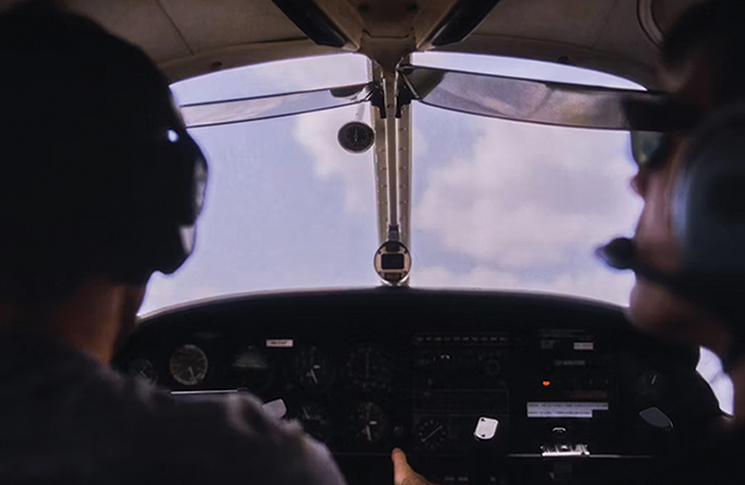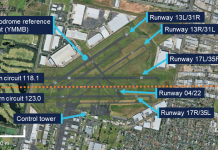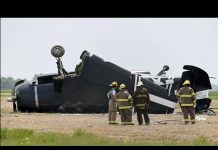I’ve had a lot of worries in my life, most of which never happened. – Mark Twain
If you are current and knowledgeable, your flight review will be a straightforward flight with a knowledgeable passenger. If your flying is a little rusty, this is your chance to add a little polish.
Ah yes, the flight review – that friendly little date with your instructor every 2 years that feels like a flight test, even though it isn’t one.
Let’s clear this up now: a flight review is not a pass/fail test. It’s a refresher, learning opportunity and competency check. It’s a way to ensure you’re still sharp and switched on for safe flying. It’s also a great excuse to reconnect with an instructor, ask questions, and get up-to-date with the latest information.
What CASA says about flight reviews for aircraft class and type ratings
For most pilots, if you want to keep exercising the privileges of your pilot licence, you’ll need to do a flight review for your aircraft rating at least every 2 years. There are other ways of fulfilling the flight review requirement. If you pass an instrument rating proficiency check or other recognised activity, you can use that to satisfy the flight review rule. And don’t forget the flight review exemption that simplifies which aircraft are covered by a flight review.
It’s important to keep your knowledge and skills up to speed so take the opportunity to engage with a flight instructor and refresh yourself and be safe. Strictly speaking, a flight review is a check of competency. And yes, it’s a legal requirement, not just a helpful nudge from your flight training operator. However, CASA encourages all pilots to include some refresher training as part of the review and that makes it much more enjoyable and productive.
It requires planning and thinking about your future flying. If you just rock up, you might be in for a surprise! The focus is on training and getting up to speed. Flight reviews are also required if you use a night VFR rating, private IFR rating or low-level rating.
So why do we stress so much about it?
Most pilots know their stuff, but many go into a flight review like they’re about to be asked to recite the VFRG backwards. Thankfully, it’s not that complicated, but you are still expected to prepare.
A flight review is not a pass/fail test. It’s a competency check.
Instructors aren’t out to fail you; they’re there to give you some training and make sure you can manage your aircraft safely in all phases of flight. And if something goes wrong, can you keep a cool head?
Examiner and instructor Steve Reh of Altocap Flight School says the real issues he sees aren’t about knowledge – it’s usually recency and rusty handling. ‘Balloons and bounces are common, especially from pilots who haven’t flown circuits for a while,’ he says.
Here’s how to get your head right before the review:
- think of it like a proficiency tune-up, not a final exam
- don’t cram – refresh
- own your gaps and ask questions, that’s what your instructor is there for
- confidence is key, not arrogance, just a healthy sense of, ‘I’ve got this.’.
Smart ways to prep
How do you get ready for a review, without getting into a spin? Here’s how the pros suggest you prep, from preflight to final landing.
You can start by visiting CASA’s website – search ratings, reviews and endorsements.
Check out:
- Advisory Circular 61-16 – Spin avoidance and stall recovery training
- CASA EX32/24 – refer to Part 5 for flight reviews. Consultation on a proposal to incorporate the exemption into the regulations commenced on 30 July 2025.
Dave Prossor, a flight instructor with 27 years’ experience and more than 400 flight reviews, says pilots often trip up, not on the obscure stuff, but on basic knowledge that hasn’t been dusted off in a while. ‘Bring your questions to the review,’ he says. ‘It shows commitment to being a safe pilot.’
Instructor Matt Norgrove from FlyOz also reminds pilots that most questions asked during the ground component are drawn from the VFRG. ‘Download the latest version; it’s free and helps eliminate surprises,’ he says. ‘We’re not here to trip you up. The goal is to ensure you’re current, capable and flying to a safe standard.’
And don’t forget to bring your up-to-date logbook and refresh your radio procedures and licence limitations.
Norgrove says many pilots rely heavily on autopilot and as a result, their general hand-flying skills deteriorate over time. ‘Practise hand flying before your review,’ he says. ‘In addition, visualisation and chair flying are 2 of the most powerful tools we have. Mentally rehearse your entire route – departure calls, top-of-climb checks, clear-off checks. It helps manage the workload and sharpens situational awareness.’
He also suggests being honest with yourself. ‘If you’ve logged 300 hours but haven’t flown in 2 years, you’ll probably need a few refresher flights. It’s not about ego, it’s about safety.’
Simulator practice
If you have access to a sim, that’s great – it’s a solid way to knock off rust and even get some basic instrument flying practice.
A flight review isn’t just a tick-the-box exercise.
On the day and what happens after
You’ve prepped and flown a few recency hours and now it’s review day.
What to bring:
- licence and medical (check expiry dates)
- aircraft documents – tech log, maintenance release
- planned nav route and flight plan – current charts
- refreshments – hydration helps the brain tick.
Norgrove points out that one of the more common oversights is not understanding the maintenance release. Are there outstanding items or endorsements that need addressing?
‘We can’t legally fly the aircraft if that’s not current,’ he says. It’s particularly relevant for those who fly privately owned aircraft. ‘Booking your flight review well in advance is a smart idea, especially if you are flying your own aircraft.’
He also recommends contacting your instructor well in advance to discuss what is expected on the day. This will give you plenty of time to prepare and work out what you want to cover in the review.
Reh says nerves and lack of recency are usually to blame for poor performance. ‘It’s not knowledge, it’s lack of time in the seat.’ So, get airborne before your review.
Common mistakes pilots make:
- rushing pre-flight checks
- sloppy or unclear radio calls
- ignoring or skipping checklists
- relying solely on a single EFB without a backup
- letting nerves take over.
Norgrove also reminds pilots that while EFBs are useful and almost standard in the cockpit nowadays, you must show you can use them confidently and safely. ‘Don’t spend 90% of your time head down in the cockpit. EFBs can overheat or fail, so always carry a backup source and charts, along with your power sources.’
What if you don’t complete the review?
First, take a deep breath. You’re not getting kicked out of aviation. The main theme of this article is to remind you this isn’t an exam – it’s about refresher training and making sure you’re competent and proficient. It’s about safety in the sky, for you, your passengers, fellow pilots and everyone else sharing the airspace. Do some training and get yourself up to speed with the help of your instructor.
Matt Norgrove says, ‘I see the flight review as a process of getting you to a competent standard. Skills naturally deteriorate if you’re not flying regularly. It’s not uncommon to need some more refresher training and extra flights.’
So, ask questions. Treat your instructor like a teammate. And remember – the flight review is there to make you a better, safer pilot.
Before we land this thing
Flight reviews can seem like a big deal – and they are – but not in the way many pilots fear. They’re a brilliant opportunity to reflect, refine, reignite your flying skills and improve how you manage your flight with the help of someone who wants you to succeed.
And once it’s done? Celebrate, then log it:
- if no training is received, log as pilot-in-command under supervision, per regulation 61.095(3)
- if training is received, log as dual.
Because competency isn’t a destination – it’s a habit.
Smart ways to show up
Here are 7 smart ways to show up sharp:
- Know your aircraft – review the POH, run through your checklists and brush up on emergency procedures.
- Hit the books – skim through regs, refresh airspace rules and flag any knowledge gaps to discuss on the day.
- Pick the right instructor – go with someone experienced in reviews who can add to your flying toolkit, not just tick boxes.
- Plan like a pro – a good flight starts on the ground. Review nav, weather and alternates and know your plan B.
- Talk the talk – keep your radio calls clear, calm and confident. It’s not a script, just solid comms.
- Stay sharp in the sky – situational awareness and decision-making matter more than perfect flying; think ahead.
- Drill the emergencies – practise engine outs, system failures and in-flight decision-making. You don’t rise to the occasion – you fall back on your training.
Your instructor’s not there to catch you out – they are there to build you up.
Further information
Part 61 guides
For further information check out the Part 61 guides for both aeroplane and helicopter category flight crew licensing. Get them in print and digital formats.
Webinar recording
Watch our flight planning – flight reviews webinar recording and learn how to make the most of your flight review.





